70% CI costs reduction by running Playwright Tests on Spot Instances
Explore FundGuard’s journey from inefficient Cypress tests to a more stable and efficient CI pipeline of highly concurrent Playwright tests running on multi-cloud spot instances

Introduction
FundGuard collaborated with Currents to optimize their CI/CD pipeline by switching from inefficient Cypress tests to a more stable, highly concurrent Playwright-based E2E tests.
The result: a 50% reduction in CI/CD testing duration and 70% reduction in CI/CD costs leveraging cloud spot instances and Currents Orchestration.
About FundGuard

FundGuard is a cloud-native accounting solution, helping asset managers, banks, and financial institutions streamline operations and make data-driven decisions. By using AI and scalable cloud infrastructure, FundGuard enhances efficiency and reduces operational risks in a fast-changing financial environment.
FundGuard's Testing Stack
FundGuard's engineering team operates in a high-velocity release cycle where quality and speed are equally critical. To maintain this pace without introducing instability, developers, DevOps, and test automation engineers work together to run state-of-the-art CI pipelines that validate every change before merging to the "main" branch and deployment to production. The CI system supports both backend and end-to-end UI tests, ensuring that features work as expected across the stack.
Automated testing is deeply integrated into the development workflow, allowing engineers to catch issues early and move forward with confidence.
We're developing a mission-critical, enterprise-grade fintech solution that is not allowed to fail, so we take testing very seriously.
The team takes a strict approach to the health of its testing suite, following a comprehensive process to manage test flakiness and stability. This involves:
- evaluating test health and performance,
- continuously monitoring test execution,
- fine-tuning tests to minimize failures caused by unreliable environments.
By doing so, FundGuard ensures that its software remains robust and production-ready at all times.
Testing Challenges at Scale
As FundGuard's engineering team grew and the product evolved, the number of tests steadily increased. New product features required the creation of additional test scenarios, which in turn increased the load on CI pipelines.
Without proper planning this could lead to an increased load on CI pipelines resulting in:
- longer CI run durations,
- increased infrastructure costs,
- greater complexity in maintaining test reliability across the expanding test suite.
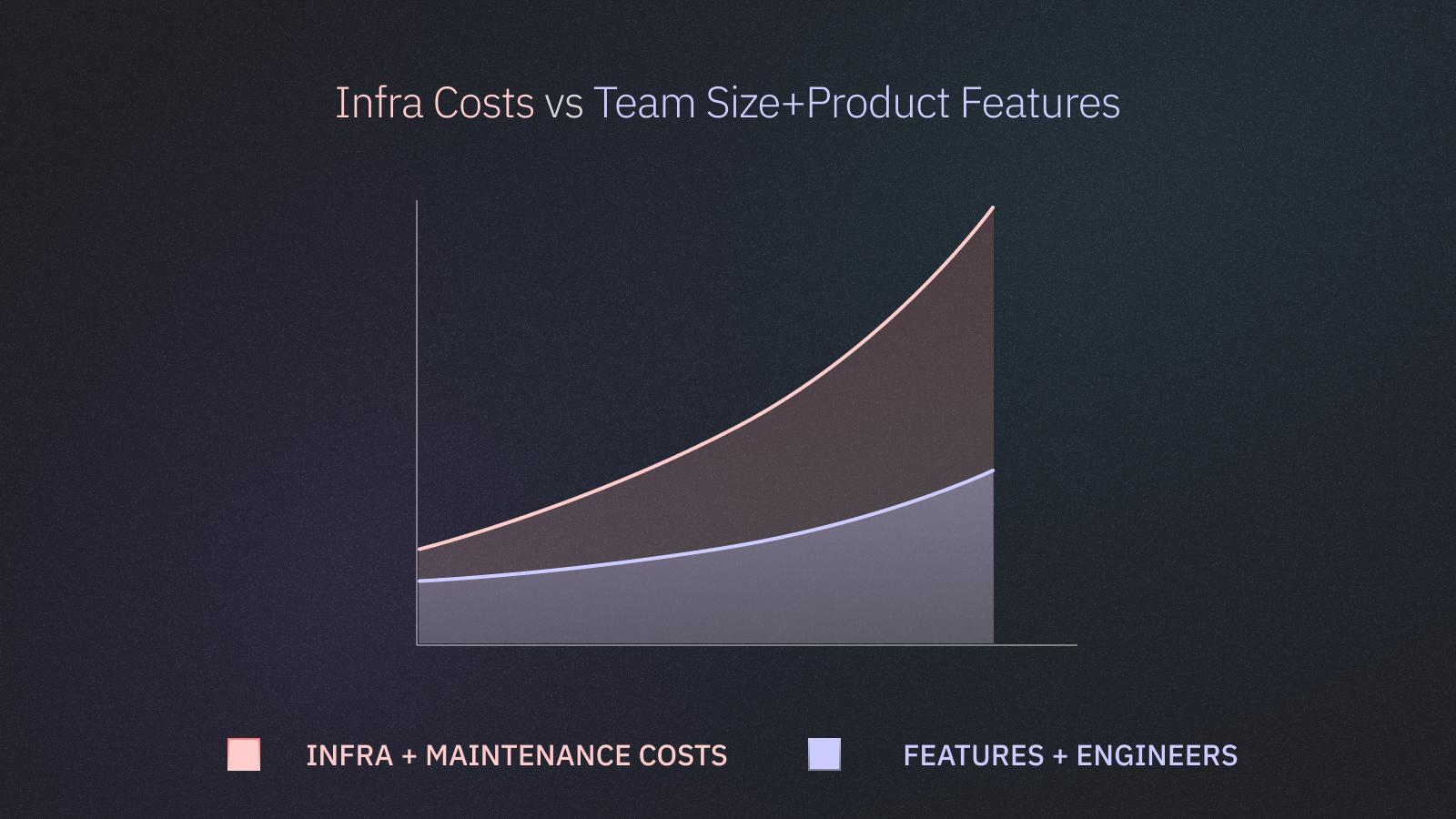
We have a fixed amount of time to make sure a code change does not regress our product. As the cadence of changes grew and the product features expanded this became more of a challenge, especially when taking costs into account.
Running tests at this scale demanded significant infrastructure investment and a well-planned approach to test execution. Without careful resource management, there was a risk of CI pipelines quickly becoming bottlenecks and potentially delaying development and slowing down releases.
Migrating from Cypress to Playwright
One of the main challenges was ensuring that fragile end-to-end tests run reliably and efficiently. The company previously used Cypress but encountered several issues inherent to the framework:
- Resource Usage – Cypress required large CI machines, increasing infrastructure costs.
- Flakiness – The test suite was unreliable, with random test failures occurring in every CI run, frustrating the team and delaying releases.
- Limited Testing Scenarios – Cypress had constraints that prevented testing certain use cases.
- Maintainability - Debugging and investigating failures was difficult and time-consuming.
To address these limitations, the team decided to migrate their tests to Playwright. Playwright provided a lightweight alternative with better performance, lower resource consumption, and more robust test reliability.
Preparing for Migration
The transition process took approximately six months, with a dedicated team of two senior test automation engineers leading the effort. Their responsibilities included:
- building the necessary infrastructure to support a large-scale migration,
- setting up reporting and monitoring tools,
- facilitating the overall migration process for the engineering team.
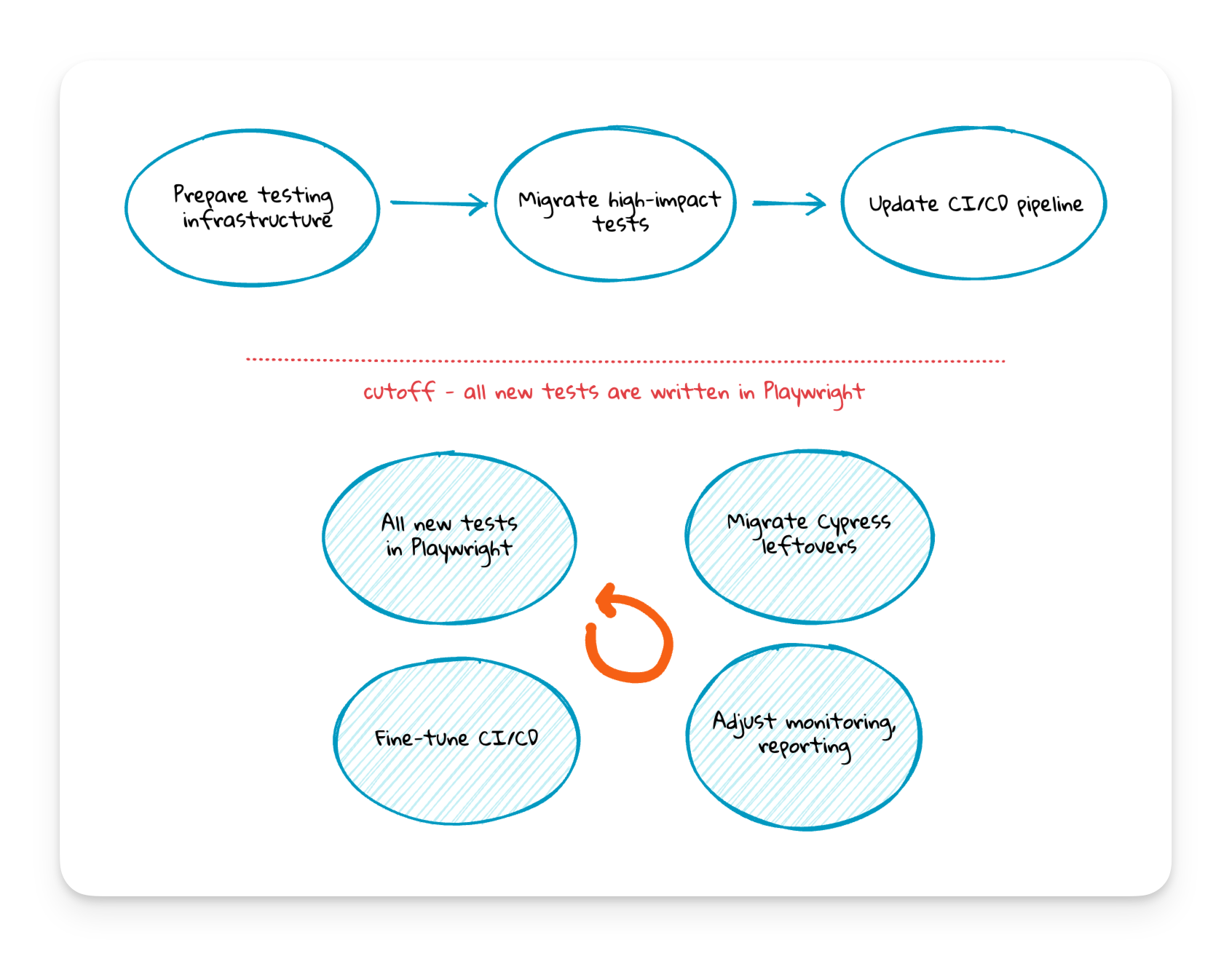
After an initial proof of concept, the team began gradually migrating tests while ensuring that all newly written tests were implemented in Playwright. A spearhead test was established to set coding standards, ensuring consistency across test implementations and providing guidance and support to the rest of the developers.
Migration Outcomes
This effort resulted in significant improvements in test performance, stability and maintainability.
Migrating to Playwright was like a breath of fresh air. We could run much more tests on the same resources, more reliably and if something broke it was much easier to investigate and fix.
Developers also welcomed the transition, appreciating Playwright’s native TypeScript syntax and additional framework capabilities, which made writing and maintaining tests more intuitive and efficient.
Cutting Costs and Speeding Up CI
As part of the migration, the team remained committed to reducing CI costs for their extensive end-to-end test suite. While Playwright was already significantly faster than Cypress, the team sought additional ways to optimize both cost and duration.
Improving Playwright Sharding with Currents Orchestration
The team had already been using Currents to collect test results, troubleshoot failures, and track flakiness. They implemented Playwright Sharding to run tests in parallel, further accelerating execution time.
To push efficiency even further, they decided to enable Currents Orchestration, which allowed them to reduce the duration of their CI E2E test pipeline by 50% from ~80 to ~40 minutes.
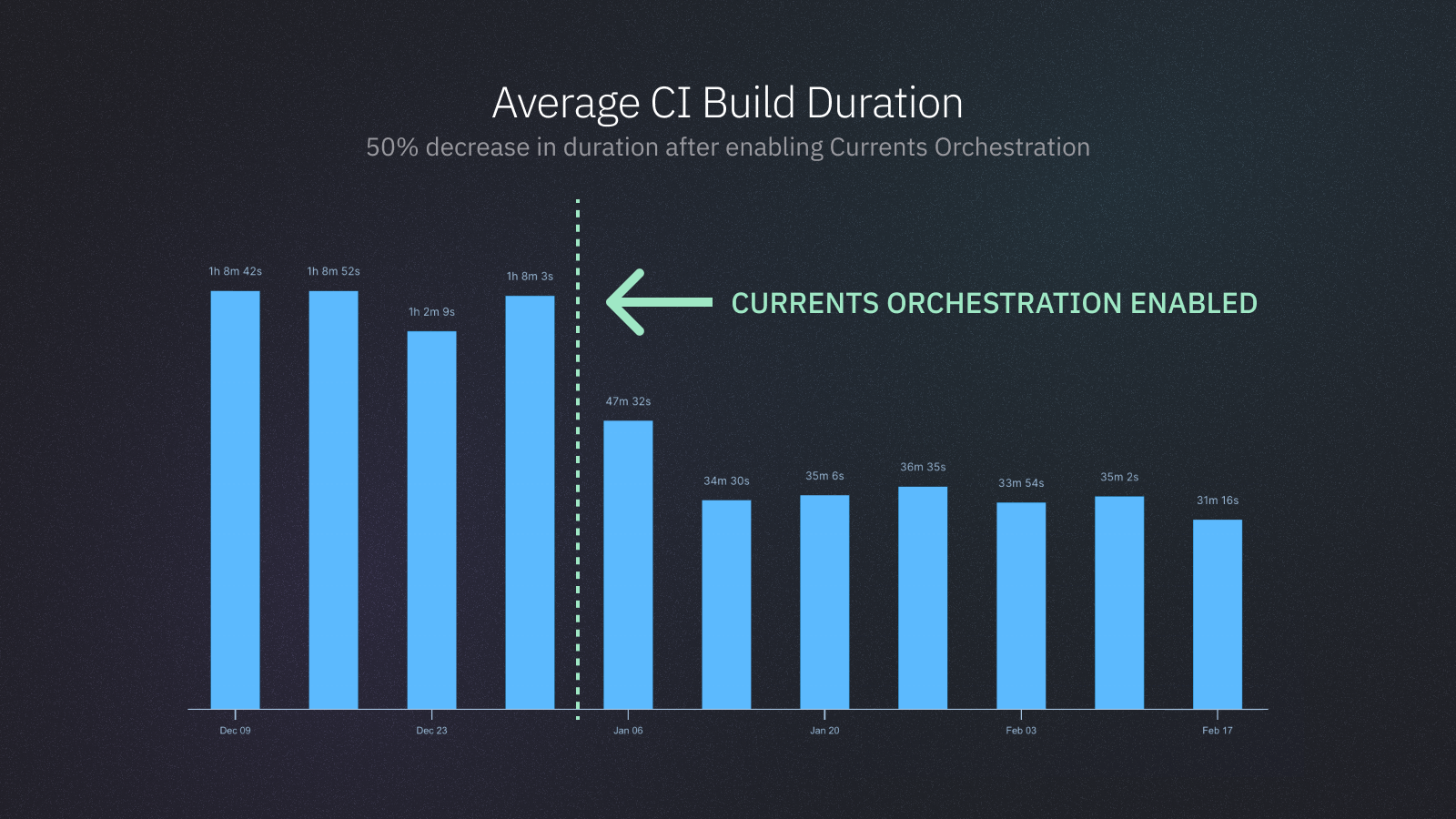
This optimization also made test execution time more stable and predictable without requiring manual intervention.
Leveraging Cloud Spot Instances for Cost Reduction
💡 A spot instance is a cloud VM that lets you use unused compute resources at a massive discount - 70-90% off the regular price. You trade cost savings for stability, because sport instances can be terminated at any time with little notice.
However, reducing execution time alone was not enough — FundGuard had a broader goal of cutting CI costs even further. They already used AWS and Azure Cloud to run tests on Azure Pipeline Agents but sought to leverage AWS EC2 Spot Instances and Azure Spot Virtual Machines, which can be up to 90% cheaper than traditional on-demand instances.
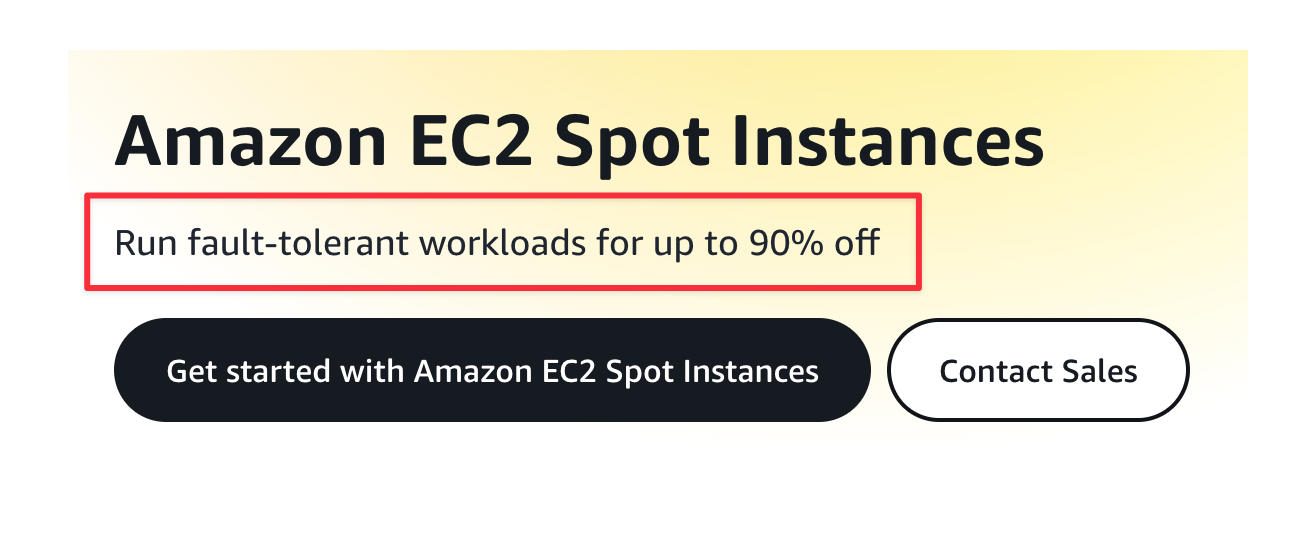
The main challenge with Spot Instances is their volatility — they can be terminated at any time, requiring a full rerun of affected tests, potentially negating cost savings.
This is where Currents played a critical role. Working closely with FundGuard, Currents implemented an advanced mechanism that detects when a Spot Instance is about to be terminated.
💡 Instead of losing progress, Currents automatically relocates the affected tests to another machine, preventing unnecessary reruns and ensuring test results are preserved. All this happens seamlessly in the background, without any manual intervention.
When I presented this idea to Currents, they immediately responded to the great challenge, and after working together we were able to implement this amazing feature that, in my opinion, is unique and groundbreaking!
This optimization enabled FundGuard team reduce the cost CI of running Playwright tests by a whooping 50% on AWS and 90% on Azure!
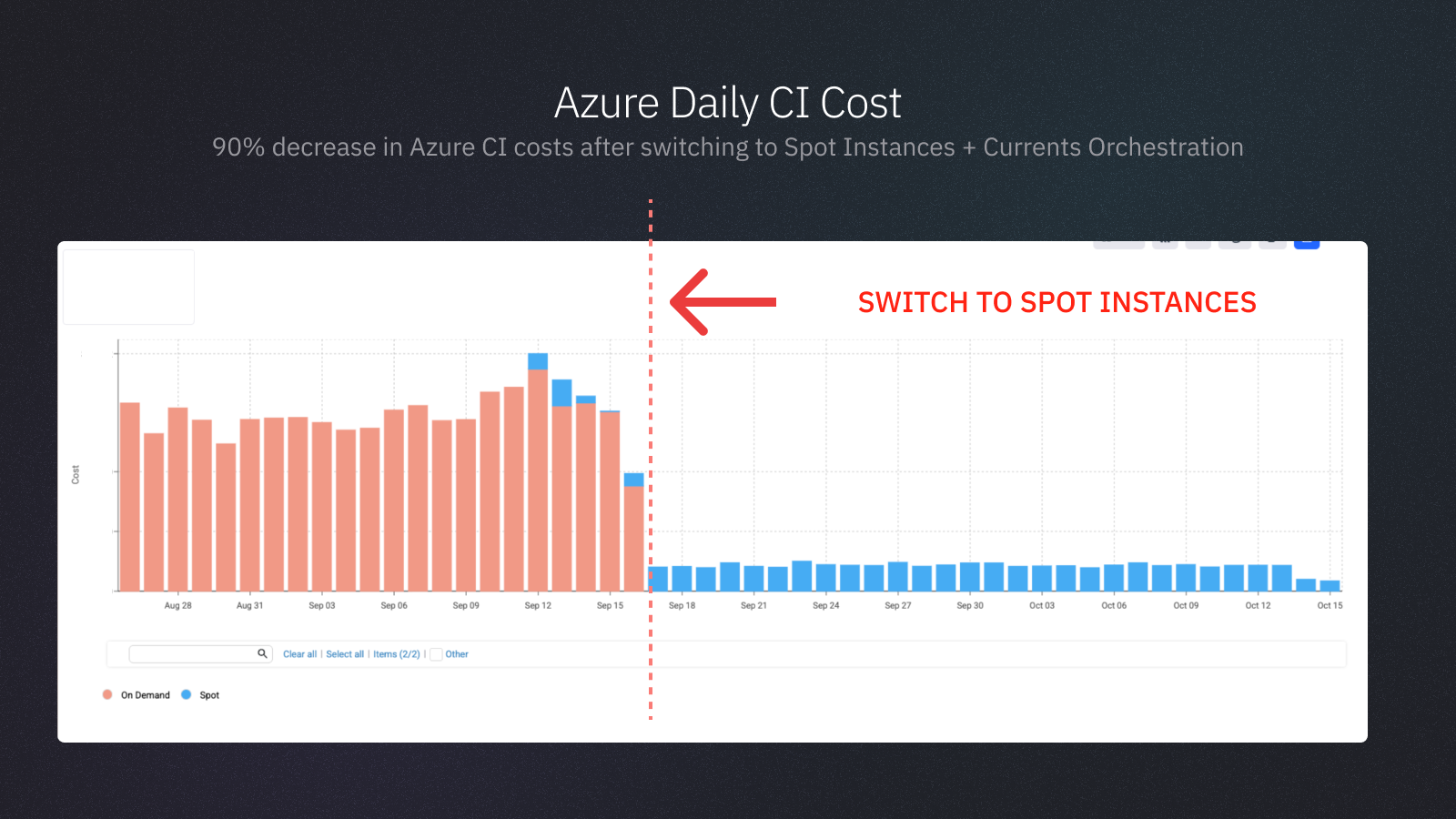
Collaboration with Currents
Currents was an essential component in helping FundGuard maintain and improve the performance and reliability of their high-throughput CI pipelines.
Currents gives us all the data we need about our extensive suite of E2E tests, allowing us wide spectrum of visibility from high level insights on the entire operation down to a single action inside a test run.
In addition to the traditional features used by FundGuard developers and team leads to troubleshoot test failures, tackle flakiness, and ensure the stability and health of their testing suite, the two companies collaborated to solve real-world challenges with tangible results. Their partnership facilitated the migration to Playwright, significantly improved the efficiency of FundGuard’s CI pipeline, and allowed the company to cut the cost of running Playwright E2E tests on CI. Most importantly, this collaboration enabled FundGuard to sustain a high-velocity release cycle without compromising on quality.

Currents proved to be a true partner by actively incorporating FundGuard’s feedback into their platform, delivering meaningful solutions for FundGuard’s challenges.
Working with Currents is a blast. They are super responsive and attentive to our needs. It is rare to see this level of cooperation from a service provider.
The partnership doesn't stop there — both companies continue working together to leverage Currents’ platform for further optimizations and evolving testing needs.
Join hundreds of teams using Currents.
Trademarks and logos mentioned in this text belong to their respective owners.


